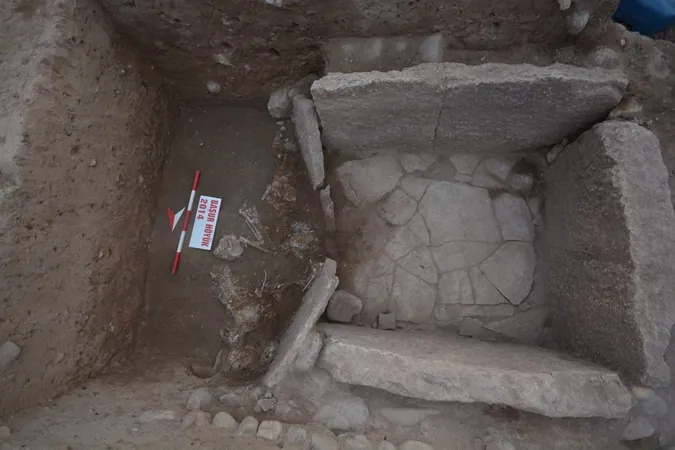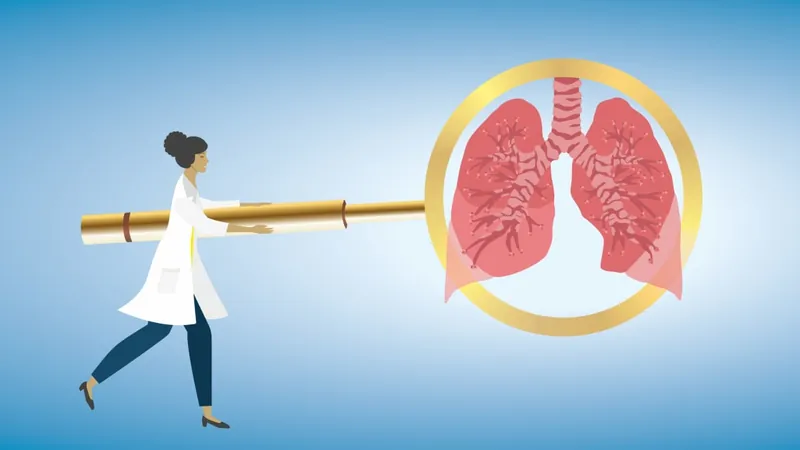
Shocking Discovery: Teenage Girls as Human Sacrifices in Bronze Age Turkey Tombs!
2025-03-27
Author: Yu
Groundbreaking Archaeological Revelation
In a groundbreaking archaeological revelation, researchers have unearthed startling evidence of human sacrifices, primarily comprising teenage girls, in a Bronze Age tomb located in Turkey. This dramatic discovery not only sheds light on ancient Mesopotamian burial practices but also challenges long-held beliefs about the societal structure of the time.
The Findings in Mesopotamia
Five thousand years ago, the inhabitants of Mesopotamia constructed elaborate stone tombs filled with intricate grave goods, including copper artifacts, textiles, and beads. However, recent studies have turned their attention towards the age and biological sex of those sacrificed, revealing that the majority of these skeletal remains belong to adolescents. This intriguing finding has caught the attention of experts like David Wengrow, a professor of comparative archaeology at University College London, who emphasizes the oversight in the significance of adolescence in ancient societies.
Wengrow's Insights and Their Implications
Wengrow explains, “The fact that they are mostly adolescents is fascinating and surprising. It highlights how little thought scientists and historians have really given to the importance of adolescence as a crucial stage in the human life cycle.” This revelation has the potential to redefine our understanding of the social dynamics within these ancient communities.
Site of Bašur Höyük
Delving deeper into the archaeological site of Bašur Höyük, situated on the Upper Tigris River, researchers have identified that these teenage sacrifices may suggest a more egalitarian societal structure than previously assumed. Traditional beliefs depicted Mesopotamian cultures as strictly hierarchical, often led by kings and elite classes. However, the nature of these burials implies that collective, egalitarian decision-making may have played a more significant role in governance than previously understood.
DNA Analysis and Insights
Advanced DNA analysis has shown that the nine skeletons examined were not biologically related, with the overwhelming majority being female. Wengrow pointed out, “We are dealing with adolescents brought together from biologically unrelated groups to carry out a very extreme form of ritual.” The exact significance of this ritual remains elusive, but it raises important questions regarding the community's practices and values.
Shifting Interpretations of Mesopotamian Society
Past interpretations of these findings suggested that the burials were indicative of royal hierarchies, but as Wengrow argues, there is mounting archaeological evidence that points toward a more fluid political structure in Bronze Age societies. This flexibility could mean that these cultures oscillated between hierarchical governance and more collective forms of organization, where age and merit played crucial roles.
Concept of 'Age Sets'
The study also introduced the concept of "age sets," where specific age groups may have had distinct roles within the community. Elders were revered for their wisdom, while younger members were perhaps valued for their skills and vitality. This may reflect how the adolescents in these tombs could have served as initiates to a cult or victims of internecine conflicts, placing them within a broader, more complex social framework.
Future Research Directions
Despite the intriguing implications, researchers stress a need for more focus on adolescence in ancient societies. Bašur Höyük serves as a powerful reminder that the understanding of early Bronze Age states should not be solely based on royal lineages but should instead encompass a variety of societal structures.
Conclusion and Ongoing Research
Anticipating further discoveries, Wengrow hinted at ongoing research involving stable isotope analysis to trace the origins of the individuals buried at Bašur Höyük. Preliminary findings suggest that many of the teenagers may not have even hailed from the locality of the burial site.
As further investigations unfold, this ancient cemetery continues to offer invaluable insights, pushing the boundaries of our knowledge about the cultural practices of one of human civilization’s earliest civilizations. Stay tuned as we uncover more about this captivating tale from thousands of years ago!


 Brasil (PT)
Brasil (PT)
 Canada (EN)
Canada (EN)
 Chile (ES)
Chile (ES)
 Česko (CS)
Česko (CS)
 대한민국 (KO)
대한민국 (KO)
 España (ES)
España (ES)
 France (FR)
France (FR)
 Hong Kong (EN)
Hong Kong (EN)
 Italia (IT)
Italia (IT)
 日本 (JA)
日本 (JA)
 Magyarország (HU)
Magyarország (HU)
 Norge (NO)
Norge (NO)
 Polska (PL)
Polska (PL)
 Schweiz (DE)
Schweiz (DE)
 Singapore (EN)
Singapore (EN)
 Sverige (SV)
Sverige (SV)
 Suomi (FI)
Suomi (FI)
 Türkiye (TR)
Türkiye (TR)
 الإمارات العربية المتحدة (AR)
الإمارات العربية المتحدة (AR)